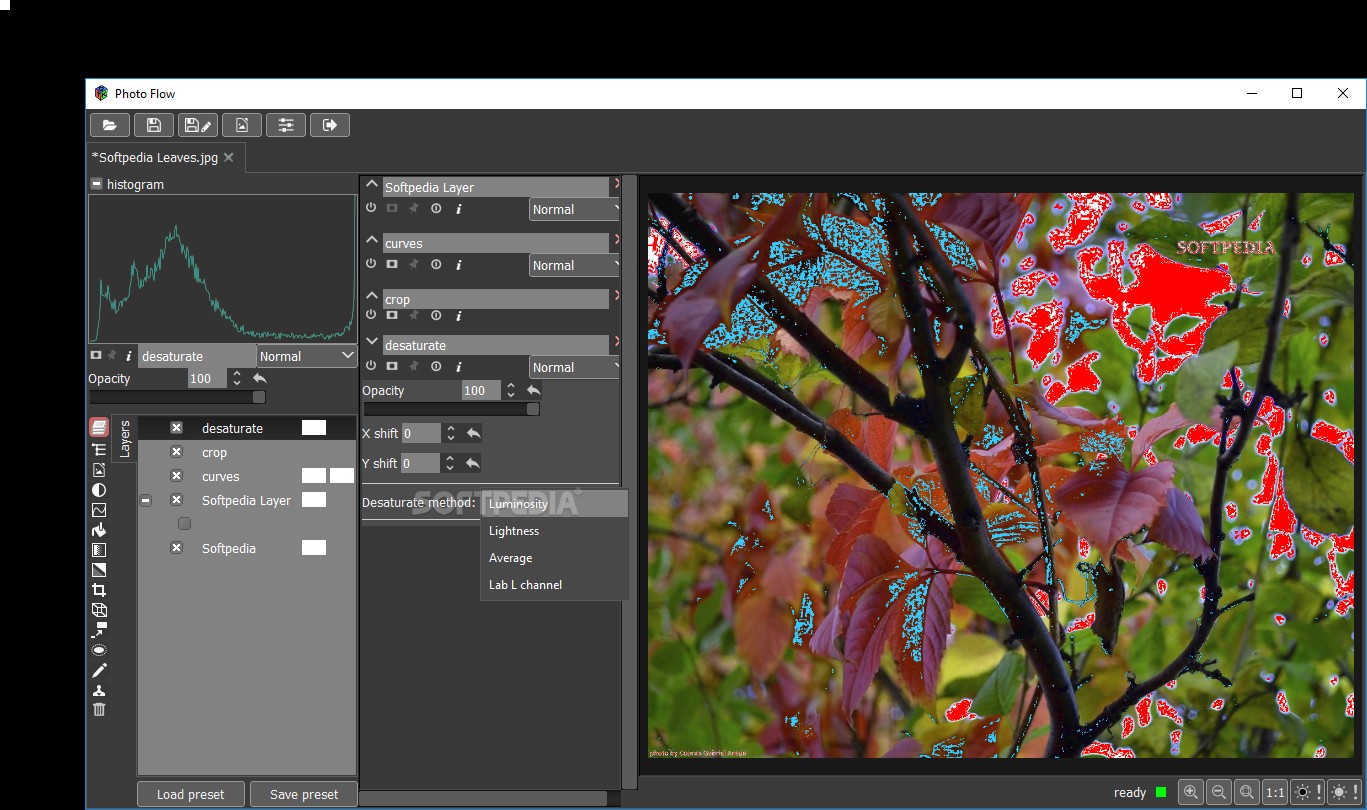
No matter how many clumsy saves or bold edits you make, Photoflow keeps your base image wholly preserved, great for anyone who doesn’t want to risk losing that base photograph. Your base layer is still the untouched photograph, just as it was when you captured it. It means that every time you edit your image, it performs that edit in a new layer.

Photoflow is an always non-destructive photo editing program. Maybe you forget to create a new copy for the edits, or you’ve gone too many edits in for the undo functionality to keep up it is where Photoflow is starting to make some exciting moves in the digital photo editing world. If you’ve been into digital photography for any amount of time, you, as I have, might have experienced the sheer terror that is realizing you just hit save after making edits you can’t take back. The digital film lets us get beyond this limitation, but not always.

It’s what’s known as “destructive” editing since it “destroys” the previous state of the film as it goes on. What do I mean? In the physical film, if you make an edit, it can be hard, or even impossible, to take it back. One of the best parts of digital photography is being able to edit images without destroying them. Photoflow has enough essential tools to get the most editing jobs done and is quickly ramping up the list of supported features.Īfter spending some time with Photoflow, you’ll be wondering why digital photography didn’t make destructive editing a thing of the past from the start.
#PHOTOFLOW RELIGHT SOFTWARE#
The software is still in early access, but I’m impressed with what it’s capable of at this stage of its design. Photoflow is an image editing software that makes the first consolidated attempt at making destructive editing a thing of the past. We’ve all lost photos of the editing process. Let’s be honest with ourselves for a second. friendly user-interface to develop new tools and images filters as external plugins. standard photo editing tools support sharpening, cropping, resizing, curves, blurring, levels, colorspace conversions, brightness-contrast control, etc. re-ordering of existing layers via drag&drop

support for color-managed workflow: user-defined input, work and output profiles, soft-proofing, etc. ability to load and edit images of arbitrary size, thanks to the underlying rendering engine based on the VIPS library architecture based on Plugins: implement quickly new tools as separate modules that load at runtime 8-bit and 16-bits support, including 32-bits and 64-bits floating point precision, selectable at runtime and on a per-image basis support for fully non-destructive, layer-based photo editing workflow with realtime preview of the final image color-correction options: black and white conversion, contrast/brightness adjustment, channel inversion, custom tones curves, hue/saturation adjustment, channel inversion, horizontal/vertical/radial gradient. color-managed processing in floating-point support

colorspace conversions based on ICC profiles (partly implemented)
#PHOTOFLOW RELIGHT PLUS#
support for RAW, JPEG, TIFF plus EXIF data and ICC profiles
#PHOTOFLOW RELIGHT INSTALL#
Note: You can find a PhotoFlow tutorial here and the Install instructions (for various OS) here. The program interface has a similar interface with GIMP or Photoshop by organizing the editing into layers, layer groups, and masks. The software is still in a developing stage, allowing you to open an image and apply basic editing filters using non-destructive adjustment layers. It is similar to Darktable or RawTherapee, and it already integrates a large number of filters from GMIC. PhotoFlow is a free, open-source non-destructive photo retouching program that provides a complete RAW image editing workflow.


 0 kommentar(er)
0 kommentar(er)
